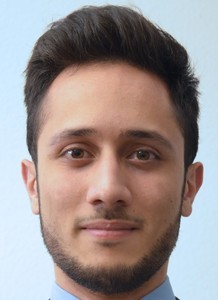11861315
OCF: Q7
Beschreibung
Keine Merkmale angegeben
Karteikarten von Tolga Aras, aktualisiert more than 1 year ago
Mehr
Weniger

|
Erstellt von Tolga Aras
vor fast 7 Jahre
|
|
Zusammenfassung der Ressource
| Frage | Antworten |
| What two processes must a photodetector perform to be able to work? | 1. It must absorb photons and transfer the energy to an excited electron-hole pair. 2. Electron-hole pair needs to initiate a current |
| In which layer of a pn-photodiode is it preferable to have the most absorption? | In Depletion Layer. (drift-zone) |
| Why does a pin-photodiode increase performance compared to a pn-photodiode? | - larger absorbing layer - better speed & dynamic due to increased current - generation within the drift-zone |
| How do we optimize the efficiency of a photodiode? | - Minimizing reflection at the surface of the diode. - Minimizing width of the p-doped section. - Choosing a material with a large absorption coefficient. |
| What limits the transit time of a photodiode? | The applied voltage and the width of the depletion region. |
| What are the four types of photodetectors that we discussed? | - pin-Photodiodes - Avalanche Photodiodes (APD) - Schottky Photodetectors - Uni-Travelling-Carrier Photodiodes (UTCPD) |
| What constitutes the front end of an optical receiver? What are the important parameters when designing the front end? | A photodiode followed by an electrical preamplifier. The load-resistor R_L |
| Which kind of front end provides both high responsivity and large bandwidth? | Transimpedance Front-End |
| What are the fundamental noise mechanisms that result in current fluctuations in optical receivers? | - Shot Noise - Thermal Noise |
| What is the source of shot noise? Which probability distribution function describes shot noise? | Every incident photon is converted only by a probability of η into an electron. Binomial distribution -> Poisson distribution (for large n) |
| What is the source of thermal noise (a.k.a. Johnson noise or Nyquist noise)? | (Random thermal motion of electrons) At a finite Temperature, electrons move randomly in any Conductor. |
| The dominance of either shot or thermal noise depends on the input optical pwr. at the PIN receiver. State the cases where one is dominant over the other and write the equations for the SNR of the received electrical signal for the two cases. |
Small P_in -> Thermal Noise
Large P_in -> Shot Noise
Image:
Q8 12 (binary/octet-stream)
|
| Why does the enhancement of the responsivity in an APD receiver result in a reduction of the SNR? | Shot noise is enhanced by K^2. |
Möchten Sie mit GoConqr kostenlos Ihre eigenen Karteikarten erstellen? Mehr erfahren.
